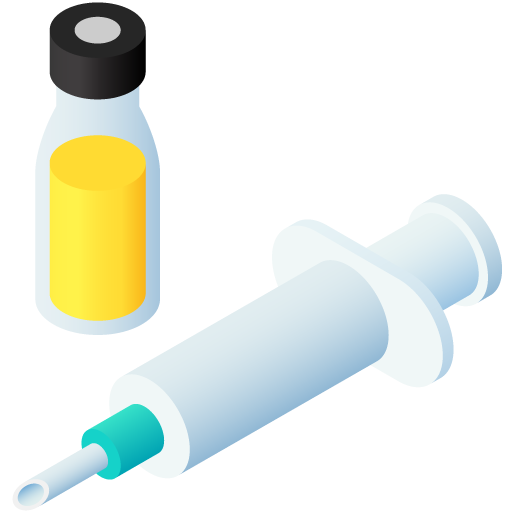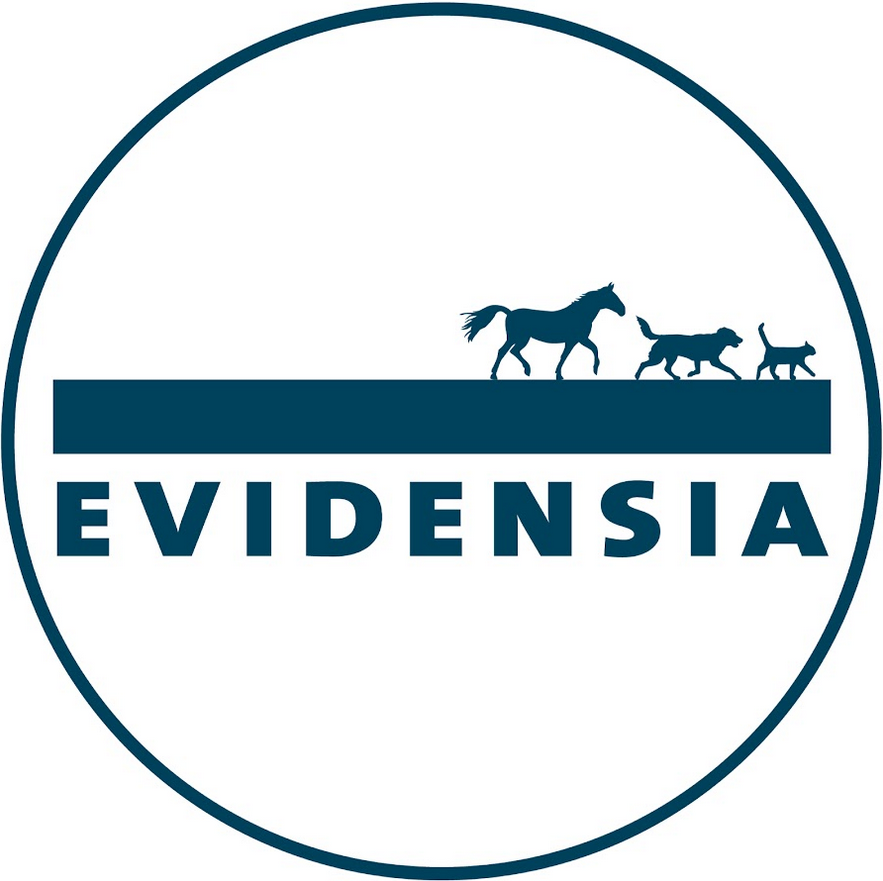Similar packages
Cerenia
Active substance
ATC code
Species
Dogs and cats.
Indications
• For the treatment and prevention of nausea induced by chemotherapy.
• For the prevention of vomiting except that induced by motion sickness.
• For the treatment of vomiting, in combination with other supportive measures.
• For the prevention of perioperative nausea and vomiting and improvement in recovery from general anaesthesia after use of the μ-opiate receptor agonist morphine.
Cats• For the prevention of vomiting and the reduction of nausea, except that induced by motion sickness.
• For the treatment of vomiting, in combination with other supportive measures.
Dose to be administered and administration route
For subcutaneous or intravenous use in dogs and cats.
Cerenia solution for injection should be injected subcutaneously or intravenously, once daily, at a dose of 1 mg/kg bodyweight (1 ml/10 kg bodyweight) for up to 5 consecutive days. Intravenous administration of Cerenia should be given as a single bolus without mixing the product with any other fluids.
In dogs, Cerenia can be used to treat or prevent vomiting either as tablets or as solution for injection administered once daily. Cerenia solution for injection may be administered for up to five days and Cerenia tablets for up to fourteen days.
To prevent vomiting, Cerenia solution for injection should be administered more than 1 hour in advance. The effect duration is approximately 24 h and therefore treatment can be given the night before administration of an agent that may cause emesis e.g. chemotherapy.
As the pharmacokinetic variation is large and maropitant accumulates in the body after once daily repeated administration, lower doses than recommended might be sufficient in some individuals and when repeating the dose.
Adverse reactions
Dogs and cats:
|
Very common (>1 animal / 10 animals treated): |
Injection site pain1,2 |
|
Very rare (<1 animal / 10,000 animals treated, including isolated reports): |
Anaphylactic-type reaction (e.g. allergic oedema, urticaria, erythema, collapse NOS, dyspnoea, pale mucous membranes) Lethargy Neurological disorder (e.g. ataxia, convulsion, seizure, muscle tremor) |
1 When injected subcutaneously.
2 A moderate to severe response can be observed in approximately one third of cats.
Reporting adverse events is important. It allows continuous safety monitoring of a veterinary medicinal product. Reports should be sent, preferably via a veterinarian, to either the marketing authorisation holder or its local representative or the national competent authority via the national reporting system. See also section 16 of the package leaflet for respective contact details.
Dispensing
POM-V - Prescription Only Medicine – VeterinarianSUMMARY OF PRODUCT CHARACTERISTICS
1. NAME OF THE VETERINARY MEDICINAL PRODUCT
Cerenia 10 mg/ml solution for injection for dogs and cats
2. QUALITATIVE AND QUANTITATIVE COMPOSITION
One ml of solution contains:
Active substance:
|
Maropitant (as maropitant citrate monohydrate) Excipients: |
10 mg |
|
Metacresol (as preservative) For the full list of excipients, see section 6.1. |
3.3 mg |
3. PHARMACEUTICAL FORM
Solution for injection.
A clear, colourless to light yellow solution.
4. CLINICAL PARTICULARS
4.1 Target species
Dogs and cats.
4.2 Indications for use, specifying the target species
Dogs
• For the treatment and prevention of nausea induced by chemotherapy.
• For the prevention of vomiting except that induced by motion sickness.
• For the treatment of vomiting, in combination with other supportive measures.
• For the prevention of perioperative nausea and vomiting and improvement in recovery from general anaesthesia after use of the μ-opiate receptor agonist morphine.
Cats
• For the prevention of vomiting and the reduction of nausea, except that induced by motion sickness.
• For the treatment of vomiting, in combination with other supportive measures.
4.3 Contraindications
None.
4.4 Special warnings for each target species
Vomiting can be associated with serious, severely debilitating conditions including gastrointestinal obstructions; therefore, appropriate diagnostic evaluations should be employed.
Good veterinary practice indicates that antiemetics should be used in conjunction with other veterinary and supportive measures such as dietary control and fluid replacement therapy while addressing the underlying causes of the vomiting.
The use of Cerenia solution for injection against vomiting due to motion sickness is not recommended.
Dogs:
Although Cerenia has been demonstrated to be effective in both the treatment and prevention of emesis induced by chemotherapy, it was found more efficacious if used preventively. Therefore, it is recommended to administer the antiemetic prior to administration of the chemotherapeutic agent.
Cats:
The efficacy of Cerenia in reduction of nausea was demonstrated in studies using a model (xylazine-induced nausea).
4.5 Special precautions for use
Special precautions for use in animals
The safety of the veterinary medicinal product has not been established in dogs less than 8 weeks of age, or in cats less than 16 weeks of age, and in pregnant or lactating dogs and cats. Use only according to the benefit-risk assessment by the responsible veterinarian.
Maropitant is metabolised in the liver and therefore should be used with caution in patients with hepatic disease. As maropitant is accumulated in the body during a 14day treatment period due to metabolic saturation, careful monitoring of liver function and any adverse events should be implemented during long term treatment.
Cerenia should be used with caution in animals suffering from or with predisposition for cardiac diseases as maropitant has affinity to Ca- and K-ion channels. Increases of approximately 10% in the QT interval of the ECG were observed in a study on healthy beagle dogs administered 8 mg/kg orally; however, such an increase is unlikely to be of clinical significance.
Due to the frequent occurrence of transient pain during subcutaneous injection, appropriate animal restraining measures may have to be applied. Injecting the product at refrigerated temperature may reduce pain at injection.
Special precautions to be taken by the person administering the veterinary medicinal product to animals
People with known hypersensitivity to maropitant should administer the veterinary medicinal product with caution.
Wash hands after use. In case of accidental self-injection seek medical advice immediately and show the package leaflet or the label to the physician. In laboratory studies, maropitant has been shown to be a potential eye irritant. In the case of accidental eye exposure, flush the eyes with plenty of water and seek medical attention.
4.6 Adverse reactions (frequency and seriousness)
Pain at injection site may occur when injected subcutaneously. In cats, moderate to severe response to injection is very commonly observed (in approximately one third of cats).
Anaphylactic type reactions (allergic oedema, urticaria, erythema, collapse, dyspnoea, pale mucous membranes) may occur in very rare cases.
Neurological disorders such as ataxia, convulsion/seizure or muscle tremor have been reported in very rare cases.
Lethargy has been reported in very rare cases.
The frequency of adverse reactions is defined using the following convention:
- very common (more than 1 in 10 animals treated displaying adverse reaction(s))
- common (more than 1 but less than 10 animals in 100 animals treated)
- uncommon (more than 1 but less than 10 animals in 1,000 animals treated)
- rare (more than 1 but less than 10 animals in 10,000 animals treated)
- very rare (less than 1 animal in 10,000 animals treated, including isolated reports).
4.7 Use during pregnancy, lactation or lay
Use only according to the benefit-risk assessment by the responsible veterinarian, because conclusive reproductive toxicity studies have not been conducted in any animal species.
4.8 Interaction with other medicinal products and other forms of interaction
Cerenia should not be used concomitantly with Ca-channel antagonists as maropitant has affinity to Ca-channels.
Maropitant is highly bound to plasma proteins and may compete with other highly bound medicines.
4.9 Amounts to be administered and administration route
For subcutaneous or intravenous use in dogs and cats.
Cerenia solution for injection should be injected subcutaneously or intravenously, once daily, at a dose of 1 mg/kg bodyweight (1 ml/10 kg bodyweight) for up to 5 consecutive days. Intravenous administration of Cerenia should be given as a single bolus without mixing the product with any other fluids.
In dogs, Cerenia can be used to treat or prevent vomiting either as tablets or as solution for injection administered once daily. Cerenia solution for injection may be administered for up to five days and Cerenia tablets for up to fourteen days.
To prevent vomiting, Cerenia solution for injection should be administered more than 1 hour in advance. The effect duration is approximately 24 h and therefore treatment can be given the night before administration of an agent that may cause emesis e.g. chemotherapy.
As the pharmacokinetic variation is large and maropitant accumulates in the body after once daily repeated administration, lower doses than recommended might be sufficient in some individuals and when repeating the dose.
4.10 Overdose (symptoms, emergency procedures, antidotes), if necessary
Apart from transient reactions at the injection site following subcutaneous administration, Cerenia solution for injection was well tolerated in dogs and young cats injected daily with up to 5 mg/kg (5 times the recommended dose) for 15 consecutive days (3-times the recommended duration of administration). No data have been presented on overdoses in adult cats.
4.11 Withdrawal period(s) Not applicable.
5. PHARMACOLOGICAL PROPERTIES
Pharmacotherapeutic group: Antiemetics. ATCvet code: QA04AD90.
Maropitant is a potent and selective neurokinin (NK-1) receptor antagonist, which acts by inhibiting the binding of substance P, a neuropeptide of the tachykinin family, in the CNS.
5.1 Pharmacodynamic properties
Vomiting is a complex process coordinated centrally by the emetic centre. This centre consists of several brainstem nuclei (area postrema, nucleus tractus solitarius, dorsal motor nucleus of the vagus) that receive and integrate sensory stimuli from central and peripheral sources and chemical stimuli from the circulation and the cerebro-spinal fluid.
Maropitant is a neurokinin 1 (NK1) receptor antagonist, which acts by inhibiting the binding of substance P, a neuropeptide of the tachykinin family. Substance P is found in significant concentrations in the nuclei comprising the emetic centre and is considered the key neurotransmitter involved in vomiting. By inhibiting the binding of substance P within the emetic centre, maropitant is effective against neural and humoral (central and peripheral) causes of vomiting.
A variety of in vitro assays have demonstrated that maropitant binds selectively at the NK1 receptor with dose-dependent functional antagonism of substance P activity.
Maropitant is effective against vomiting. The anti-emetic efficacy of maropitant against central and peripheral emetics was demonstrated in experimental studies including apomorphine, cisplatin and syrup of ipecac (dogs) and xylazine (cats). Signs of nausea in dogs including excessive salivation and lethargy might remain after treatment.
5.2 Pharmacokinetic particulars
Dogs
The pharmacokinetic profile of maropitant when administered as a single subcutaneous dose of 1 mg/kg body weight to dogs was characterised by a maximum concentration (Cmax) in plasma of approximately 92 ng/ml; this was achieved within 0.75 hours post-dosing (Tmax). Peak concentrations were followed by a decline in systemic exposure with an apparent elimination half-life (t1/2) of 8.84 hours. Following a single intravenous dose at 1 mg/kg the initial plasma concentration was 363 ng/ml. The volume of distribution at steady-state (Vss) was 9.3 l/kg and systemic clearance was 1.5 l/h/kg. The elimination t1/2 following intravenous dosing was approximately 5.8 h.
During clinical studies maropitant plasma levels conferred efficacy from 1 hour after administration.
The bioavailability of maropitant after subcutaneous administration in dogs was 90.7%. Maropitant displays linear kinetics when administered subcutaneously within the 0.5–2 mg/kg dose range.
Following repeated subcutaneous administration of once-daily doses of 1 mg/kg bodyweight for five consecutive days, accumulation was 146%. Maropitant undergoes cytochrome P450 (CYP) metabolism in the liver. CYP2D15 and CYP3A12 were identified as the canine isoforms involved in the hepatic biotransformation of maropitant.
Renal clearance is a minor route of elimination, with less than 1% of a 1 mg/kg subcutaneous dose appearing in the urine as either maropitant or its major metabolite. Plasma protein binding of maropitant in dogs is more than 99%.
Cats
The pharmacokinetic profile of maropitant when administered as a single subcutaneous dose of 1 mg/kg body weight to cats was characterised by a maximum concentration (Cmax) in plasma of approximately 165 ng/ml; this was achieved on average 0.32 hours (19 min) post-dosing (Tmax). Peak concentrations were followed by a decline in systemic exposure with an apparent elimination half-life (t1/2) of 16.8 hours. Following a single intravenous dose at 1 mg/kg the initial plasma concentration was 1040 ng/ml. The volume of distribution at steady-state (Vss) was
2.3 l/kg and systemic clearance was 0.51 l/h/kg. The elimination t1/2 following intravenous dosing was approximately 4.9 h. There appears to be an age-related effect on the pharmacokinetics of maropitant in cats with kittens having higher clearance than adults.
During clinical studies maropitant plasma levels conferred efficacy from 1 hour after administration.
The bioavailability of maropitant after subcutaneous administration in cats was 91.3%. Maropitant displays linear kinetics when administered subcutaneously within the 0.25–3 mg/kg dose range.
Following repeated subcutaneous administration of once-daily doses of 1 mg/kg bodyweight for five consecutive days, accumulation was 250%. Maropitant undergoes cytochrome P450 (CYP) metabolism in the liver. CYP1A and CYP3Arelated enzymes were identified as the feline isoforms involved in the hepatic biotransformation of maropitant.
Renal and faecal clearances are minor routes of elimination for maropitant, with less than 1% of a 1 mg/kg subcutaneous dose appearing in the urine or faeces as maropitant. For the major metabolite 10.4% of the maropitant dose was recovered in urine and 9.3% in faeces. Plasma protein binding of maropitant in cats was estimated to be 99.1%.
6. PHARMACEUTICAL PARTICULARS
6.1 List of excipients
Sulphobutyl ether β-cyclodextrin (SBECD)
Metacresol
Water for injections
6.2 Major incompatibilities
In the absence of compatibility studies, this veterinary medicinal product must not be mixed with other veterinary medicinal products in the same syringe.
6.3 Shelf life
Shelf life of the veterinary medicinal product as packaged for sale: 3 years. Shelf life after first opening the immediate packaging: 60 days.
6.4 Special precautions for storage
This veterinary medicinal product does not require any special storage conditions. 6.5 Nature and composition of immediate packaging
Amber molded glass type 1 vial, 20 ml, chlorobutyl rubber stopper and aluminium overseal with flip-off button.
Each cardboard box contains 1 vial.
6.6 Special precautions for the disposal of unused veterinary medicinal product or waste materials derived from the use of such products
Any unused veterinary medicinal product or waste materials derived from such veterinary medicinal product should be disposed of in accordance with local requirements.
7. MARKETING AUTHORISATION HOLDER
Zoetis UK Limited
1st Floor, Birchwood Building
Springfield Drive
Leatherhead
Surrey
KT22 7LP
8. MARKETING AUTHORISATION NUMBER
Vm 42058/5008
9. DATE OF FIRST AUTHORISATION
28 September 2006
10. DATE OF REVISION OF THE TEXT
September 2022

Approved: 02 September 2022

 TRUSTED SOURCE
TRUSTED SOURCE








